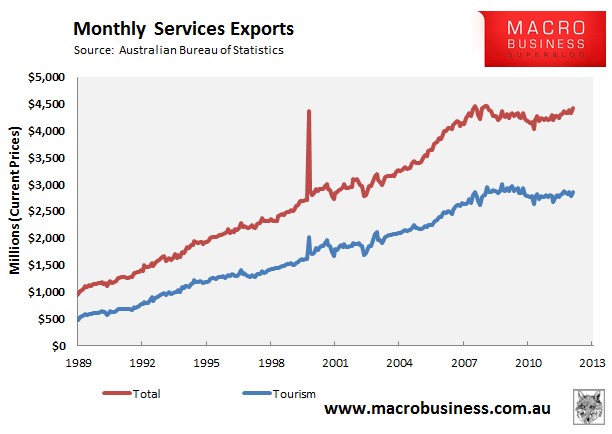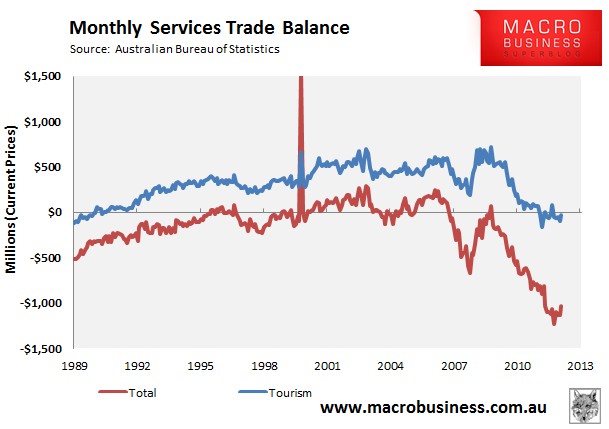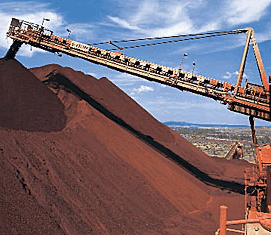
The Australian Bureau of Statistics (ABS) has just released trade data for the month of January, with Australia’s trade deficit increasing to a seasonally-adjusted $1,057 million, from $688 million in December (revised upwards from $427 million).
It was the thirteenth consecutive month that Australia has recorded a monthly trade deficit (see below chart).
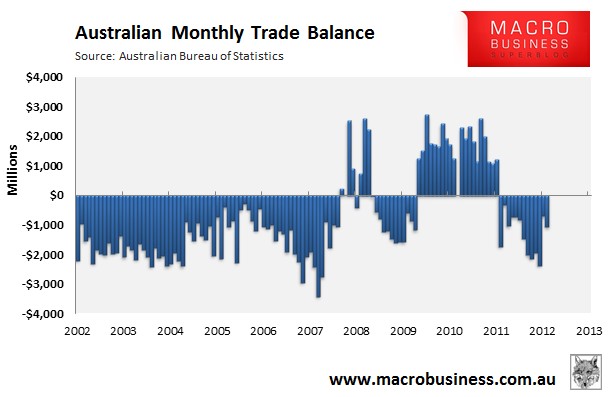
In seasonally adjusted terms, exports fell $185m (1%) to $25,023m. The decrease in exports was compounded by a $185m (1%) increase in imports to $26,081m.
Australia’s two major export commodities – iron ore (26% share) and coal (17% share) – fell by by -$440 million and -$417 million respectively. Gas exports (6% share) also fell marginally (-$59 million), whereas Australia’s third biggest export – gold (7% share) – rose by $153 million over the month (see below chart).
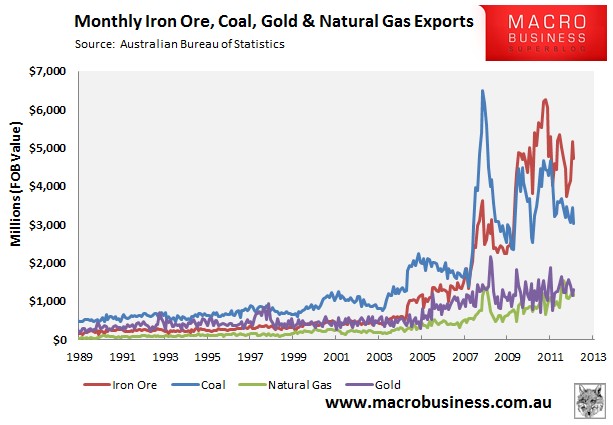
Exports to China fell sharply, down by -$939 million (-13%) over the month, taking its share of total exports to 34%. Exports to the three other major markets – Japan (-$493 million), Korea (-$304 million) and India (-$450 million) – also fell over the month of January (see below chart).
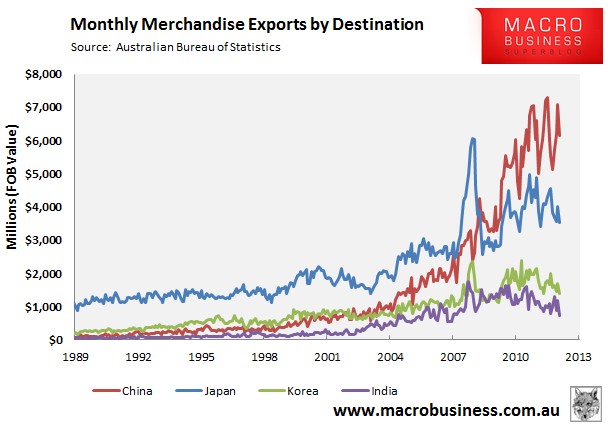
Western Australia continues to dominate the nation’s exports. It alone accounted for a record 52% of Australia’s merchandise exports in January, despite exports falling by 9% over the month. By comparison, exports from Queensland crashed by -30% (see below chart).
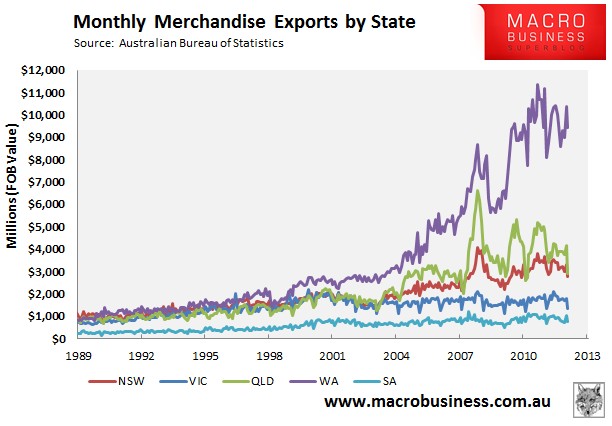
Western Australia is also the only state with a meaningful trade surplus:
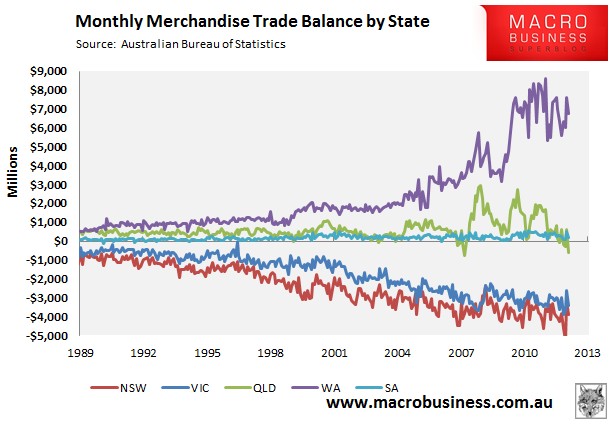
Finally, Australia’s services trade balance improved in January (+$108 million), and has essentially stabilised over the past five months after a horror run since late-2008 on account of the high Australian dollar (see below charts).
